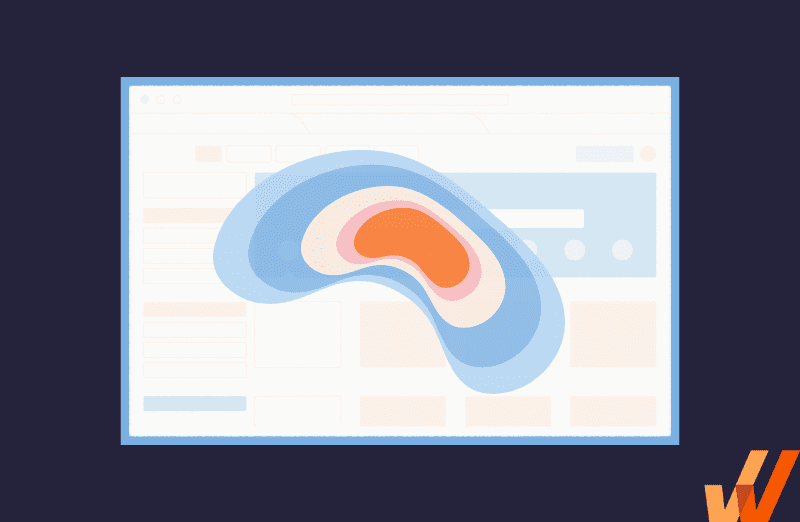Effective product teams understand the user flows their user personas and customer cohorts take, their core challenges, the overall customer and user journey, and the outcomes they want to achieve from your product.
A UX exercise that provides a better understanding of users and uncovers UX flow issues is a user path analysis.
This article explores the concept of a user path analysis exercise, breaks down typical user flows that can be analyzed, shares common UX issues that can be resolved with flow analysis, and provides best practices and tips on conducting your first user flow analysis.
What Is a User Flow Analysis?
A user flow analysis is a UX exercise that examines user behavior and trends when they interact with a product, its on-screen elements, and its overall user paths. A basic user flow is typically portrayed as a flowchart that visualizes the paths a user might take to complete an action on a website or application.
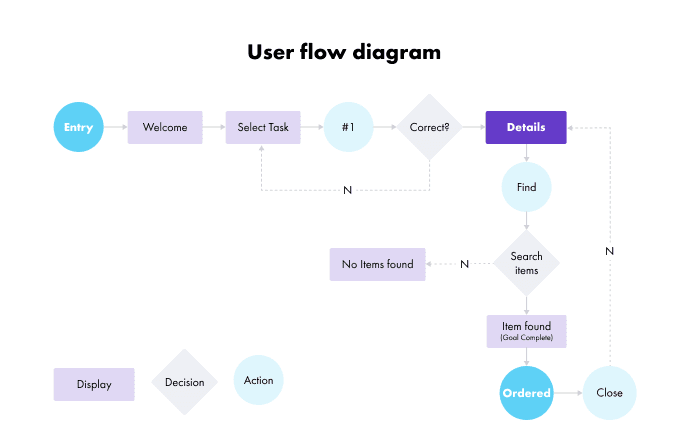
Users of a website or product interact with a series of screens and actions that lead them to a specific milestone — like creating an account, opening their first project, or collaborating on tasks with a particular number of users.
Conducting a user flow analysis helps product and UX teams compare different user journeys, identify friction areas, help users achieve their “aha!” moment, and build a user experience that drives customer acquisition, adoption, and retention.
Benefits of a User Path Analysis
Your user paths are blueprints for your product development and design and understanding your customers and how they’re extracting value for your product.
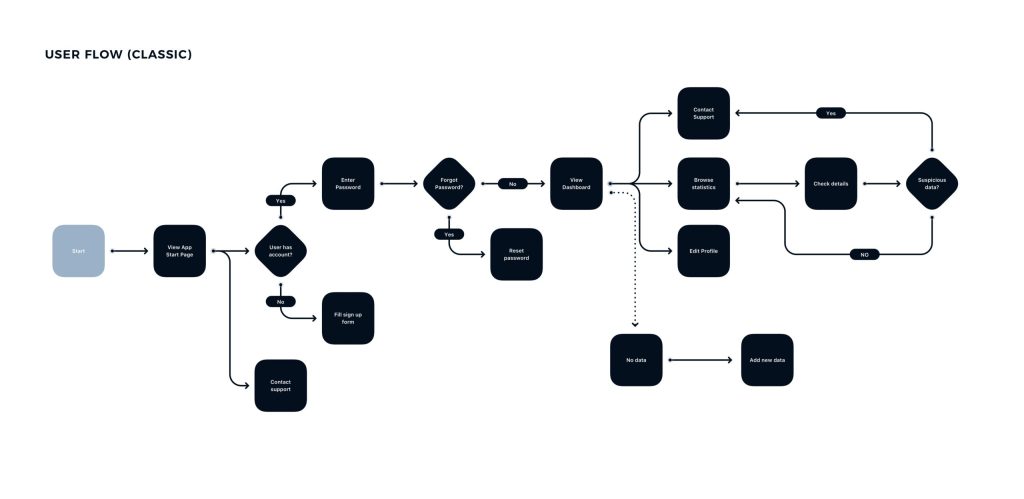
In the example above, you can see how a single starting point can branch into several user paths — each with its destination and unique purpose. However, your customers will encounter difficulties if you do not understand how this web of interactions translates into a cohesive user experience.
Something as simple as an extra screen or click can be enough to frustrate users and turn them away. But with a user path analysis, product and design teams have clear visibility into every action and can make realistic, user-centric decisions.
These small changes can make incremental UX improvements that provide continuous improvements to your user paths, helping to drive conversion, reduce churn, and drive outcomes for your users.
Product and UX teams can take action with the data and trends uncovered by a user path analysis by:
1. Identifying the optimal user paths
The user path analysis process helps teams explicitly document all potential actions users may take, making it easier to run tests, compare results, and continuously interate for new product launches and future updates.
In UX Matters, UX consultant and author Steven Hoober lists down surveys, user reviews, and focus groups as analysis and data collection methods that may be prone to bias and poor documentation practices if not executed correctly.
However, user behavior analytics and test sessions are some of the methods you can turn to because they involve repeatable processes and an explicit ‘control’ testing variable.
You can launch experiments with different user paths and use product analytics tools like Whatfix to track behavior and measure success across each path before implementing them into your product.
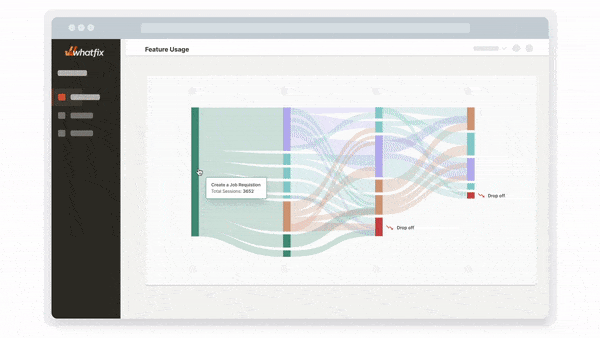
With this product and user data, you can map out the optimal user path(s) that help achieve your contextual outcome, from improving freemium-to-paid conversions, guiding users to their “aha!” moment, reducing churn, or driving new feature adoption.
2. Identifying and fixing user friction and bottlenecks
Beyond identifying the paths most successful for your product, a thorough analysis will highlight the factors deterring users from conversion and activation milestones.
Mapping out pages, buttons, and movements within your website or app will help you spot elements that introduce user challenges. You may uncover paths with too many steps, unnecessary actions, or an unlogical flow of content as users navigate from one place to another.
You’ll want to identify these issues during your user path analysis to factor in time to collect feedback from team members, troubleshoot errors, and implement better UI elements and UX design alternatives to overcome dropoff points and user friction.
With a product analytics tool like Whatfix, product teams can identify these areas of user friction quickly and launch new in-app communication, guidance, and UI elements to tackle these dropoff areas and keep users in your product longer.
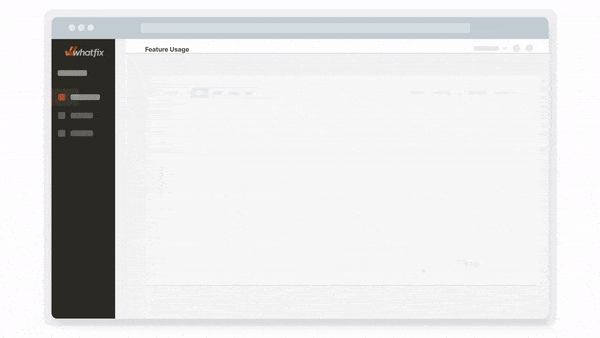
3. Monitoring how different users engage with your product or service
The success of your product ultimately depends on your users’ ability to maximize it as you intended. Understanding user interactions is impossible without having direct visibility into the behavior that occurs within a product daily.
Applying your own experience or people’s experiences within your team will contain bias — but monitoring real-time user paths within your product isn’t. A user path analysis empowers you with the data you need to make these confirmations and boost your product’s usability.
More complex products will have multiple use cases and different types of users looking to achieve different outcomes. This means you’ll need to build and test user paths for various segments of users – depending on their use cases and intended business outcomes.
For example, consider a project or task management tool like Asana or Airtable. The end-user may be a product marketer, content marketer, product manager, etc. There will be countless paths new users can take, and the user persona will determine what path is the most optimal for helping them achieve their “aha!” moment and convert them into active users.
With Whatfix, product teams can build different user segments based on their intended use case, allowing them to craft contextual experiences built for their persona. Whatfix empowers product teams with the tools to perform cohort analysis exercises and analyze user flows and journeys for each group.

4. Build an overall better customer and user experience
Looking at UX trends driving software development this year, we see a continued emphasis on creative, personalized, and interactive digital experiences for users. UX trends include UI elements like sophisticated scrolling, animated navigation menus, AI, and virtual reality, as some of the ways brands leave unique impressions and customers — and challenge traditional UX expectations.
But even when deviating from the norm, companies must ensure their users leave a website or app feeling inspired and not lost or confused. Conducting a user path analysis will guide you as you explore your options, ensuring a logical and seamless experience regardless of your creative direction.
A user flow analysis confirms your UX hypothesizes or uncovers previously undiscovered product issues that are hindering your ability to retain users.
Examples of Common User Flows to Analyze
You’ll notice that the most successful brands have concise, easy-to-understand user flows, and empathetic toward how a user would engage with their product in real-world settings.
Every interaction within your website or app should be centered around the principles of human factor design, which helps companies develop products that can effectively reduce the cognitive load on users.
A user flow analysis can give teams contextual insight into user behavior in a natural setting to identify bottlenecks and immediately deploy improvements that can impact bottom-line metrics.
In the examples below, we explore expected user flows, journeys, and paths you can track and assess.
- User onboarding: Understand how your users sign up for your product or service, complete necessary introductory tasks, and familiarize themselves with core features.
- User navigation: Assessing your navigation flow will help you pinpoint friction that stops users from locating specific features and buttons or completing important tasks. It enables product teams to build a seamless user experience as they move through your application or website.
- Product search: Learn how customers search your website or application to find information or explore new features and products. When you analyze your search flow, determine how easy it is for users to locate your search functionality, input queries, and retrieve relevant results.
- Profile management: Give users a clean and simple pathway to managing and updating various aspects of their profile or account. A profile management flow should be straightforward and secure so users feel confident owning and controlling sensitive data. This includes updating passwords, personal identifiers, account preferences, and more.
- Payment and subscriptions: Boost customer conversions and retention with a payment process that’s simple and frictionless. Determine the screens and actions that are most relevant and necessary for adding and editing billing information. A user path analysis can help you measure the length of your process, the quality of your in-app navigation, and your ability to drive revenue.
- File management: Discover how users upload, organize, and share files within your platform. If your product revolves around your users’ ability to locate files, edit or export them, and collaborate with others, then prioritizing efficiency and responsiveness is a must.
- Purchase journey: Minimize friction and unnecessary distractions as users explore your products and services, add them to a cart, input payment details, and place orders. The design of a purchase flow is especially critical to the success of e-commerce businesses and subscription-based products. A user path analysis will help identify the information and actions that influence more significant purchase decisions or drive customers away.
- Customer support issues: Provide users with fast and intuitive processes to obtain support resources and contact customer support representatives. Beyond analyzing user flows that connect to your customer support channels, you must also assess the effectiveness of your self-help channels. The faster customers can troubleshoot simple errors and discover information without any dependencies, the more likely they will adopt your product.
7 UX Issues a User Path Analysis Can Uncover
Now that we’ve walked through examples of user paths that are frequently analyzed and optimized, let’s explore how exactly they help UX teams avoid poor product design:
1. User friction in the onboarding experience
Onboarding friction occurs when users encounter obstacles that inhibit them from using a product to its total capacity. These obstacles create frustration or confusion that can deter individuals from continuing to engage with a website or application — and in worst-case scenarios, break a user’s trust in a particular brand.
User friction in the onboarding process leads to high rates of customer churn, low user activation, and the inability to help users achieve their “aha!” moment.
Friction points can occur anywhere within a product, making it challenging for product and design teams to narrow down issues. Your user path analysis will reveal users’ actions on specific pages or buttons, including frustration signals like erratic mouse movements, long dwell times, looping back and forth between screens, abandoned forms, and more.
2. User drop-off areas in the conversion funnel
How many users do you acquire on a signup or landing page? How many users reach your activation point or “aha!” moment? What happens in between these two milestones? These are UX issues a user path analysis can identify.
Users can drop off anywhere in the funnel for various reasons, like poor instructions and explanations, overcomplicated forms, intrusive ads, technical bugs, etc.
A user path analysis provides insight into the exact dropoff points in your conversion funnel, highlighting areas you need to assess within your product. Without a user path analysis, this process will be cumbersome, lengthy, and poorly informed.
A user path analysis can also determine user dropoff across the lifecycle of a customer or user journey, from new customers who are attempting to find early value in your product, to experienced users that you want to convert from weekly-active users (WAUs) into daily-active users (DAUs).
3. UX bugs or product-related issues
A UX bug is a design flaw in your product that prevents users from starting or completing essential actions. Poorly designed websites and applications will impact how users locate information, engage with on-screen elements, and navigate from one section of your product to another.
In an article for the UX Collective, UX designer Alan Wexelbal calls these flaws deep defects stemming from a gap between a design and what people need to get things done.
“It may be that people’s actual workflow is different from what we’ve allowed in our design; we thought it was A-B-C-D but it turns out that often people want to go A-D-B-C,” he writes.
A user path analysis allows you to close this design gap by tracking and measuring product flows that make the most sense to your customers.
4. Broken links
Links make up most of any website or application’s navigation pathways. You can’t complete a form, access information, or submit a request without clicking on a link that brings you to that next step — whether that’s loading a new page, video, chatbot, or content piece.
But with the average page having up to 100 links, manually tracking and locating broken links will be far too inefficient. Product and design teams can use a user path analysis to identify where users fail to navigate to the next step in their user flow or repeatedly attempt to take the same action. These are good indicators of broken links that you can quickly evaluate and update if needed.
5. Conversion funnel leaks and customer churn
Many factors can contribute to customer churn, but many are within your control. A poor user experience, underutilized features, and a lack of training and support are significant contributors to customer dissatisfaction.
The good news is that they’re more straightforward to identify and mitigate significant issues like poor product fit or budget limitations. Studying drop-off points, frustration signals, and abnormal in-app behavior can surface issues in your product design, software development, or onboarding and adoption experience.
PlayOJO, an online casino and gaming app, used Whatfix’s digital adoption platform to improve its user path by identifying areas of user dropoff. After identifying this user friction area, they launched in-app guided messages that provided rewards to retain and convert users. The company also launched new in-app guidance during onboarding that removed uncertainties in setting up their account and provided users with a verification task list that included milestones like entering personal information, uploading identity documents, and playing their first game.
6. Cart abandonment
Consumers abandon 70% of carts during the purchasing process. Research by the Baymard Institute found that half of the top 10 reasons users abandon their carts are UI/UX errors and inefficiencies.
For example, 25% of consumers surveyed abandon their carts when a website forces them to create an account before purchasing. You can easily identify this trend with a user path analysis. If many users drop off your purchasing flow after being prompted to create an account, you can safely deduce that this user path is the least suitable for driving sales and retaining buyers.
You can then replace this purchase flow with less intrusive ways to encourage account creation before it impacts most of your user base.
7. Poor ad campaign performance
A user path analysis effectively studies user engagement with your digital marketing campaigns. From social media and display ads to email campaigns and SEO, you can evaluate buyer intent with conversion funnels and user flows to understand where and when users engage with your brand.
For example, you can use a user path analysis to pinpoint low conversion rates or abnormal interactions on specific campaigns and attribute those weaknesses to the right criteria — like keywords, channels, and audience criteria.
Having consistent visibility into these metrics will help you optimize your marketing budgets, strategy, and creative direction before it negatively impacts your overall ROI.
How to Perform a Contextual User Flow Analysis
There isn’t a single catch-all method for making a user flow analysis work for you.
The best part of it is the fact that you can use creative and data-driven strategies to get nitty-gritty details about your customers and the problems they face. Let’s look at a few customization options:
1. Segment your user flows by user cohorts
The first step to effectively assessing your user flows is grouping users into specific segments so you can track and compare differences in metrics and overall behavior. Your user segments must have unique qualities that distinguish one from the other.
For example, you can segment users by their demographic information, the types of devices they use to engage with your product or behavioral trends like usage frequency and the content they consume. This will help you attribute trends to distinct characteristics with little to no ambiguity.
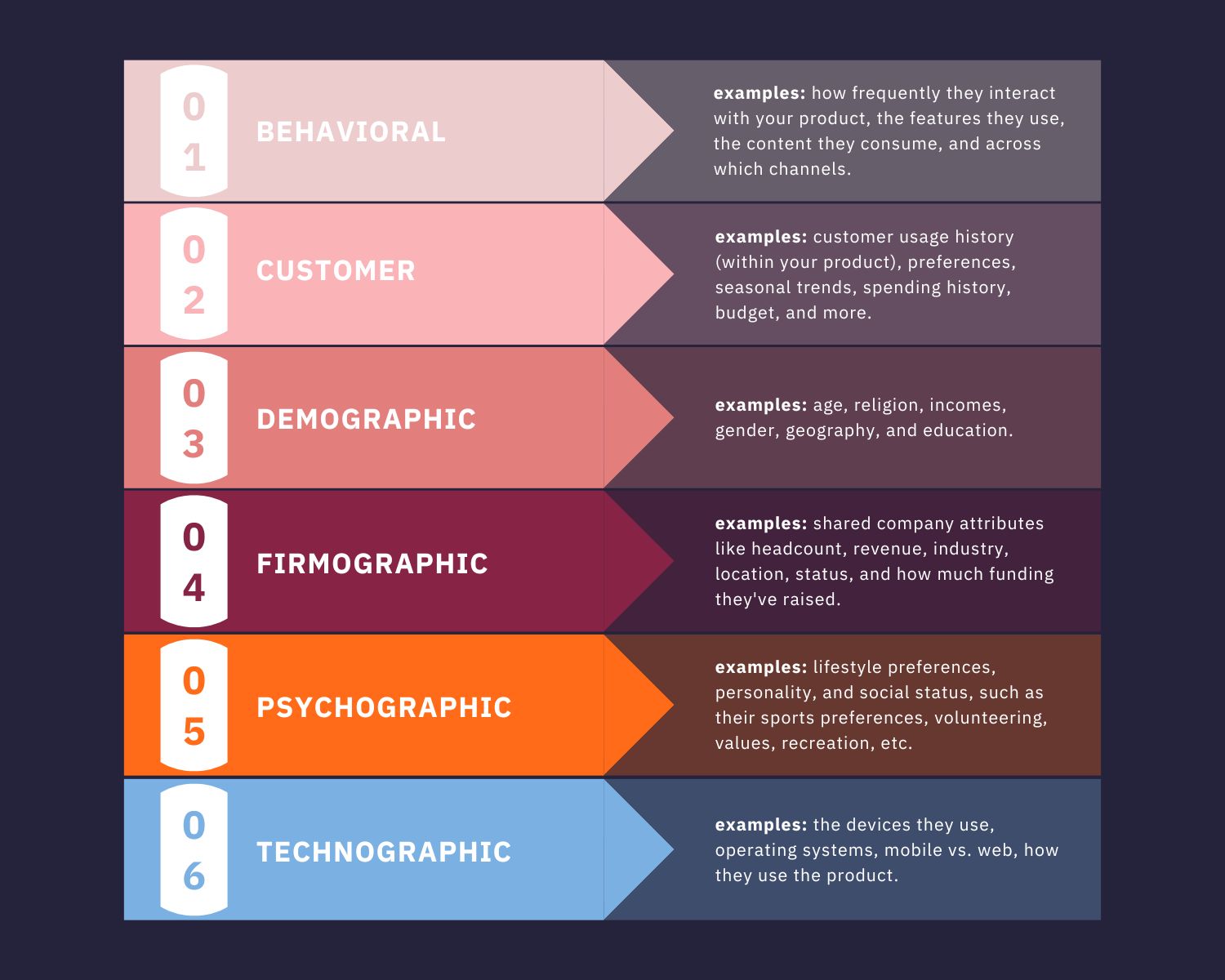
Let’s dive into a real-world example of how PlayOJO used user path segmentation in Whatfix to improve their product experience:
- User segments: Players who completed their ‘Hot or Cold explained’ user flow vs. Players who didn’t
- Goal: Collect feedback from players about their exclusive Hot or Cold feature
- Outcome: PlayOJO received more than 800 responses in under 48 hours
2. Define the start and end pages for your user flow
Your user flow shows you the journey your users take from one point to another within your website or application. If you don’t know where your user path starts and ends, it’s virtually impossible to implement tools and tests that can measure user behavior effectively.
What are their entry points to your solution? How do they end up on high-impact pages that drive conversions? On what pages do they exit your website or app, and how far along are these pages in your user journey compared to where you want them to complete an action?
Your starting page could be your homepage, a landing page or a section within your website that triggers the start of an essential action via elements like a link, button, or form. For a subscription-based software company, this might be a pricing page that kicks off a billing flow.
The end page for this flow is a billing confirmation page that shows users that their payment has been successfully received. Your end pages should also consider alternate endings that your user experience needs to account for — like a payment failure or subscription cancellation page.
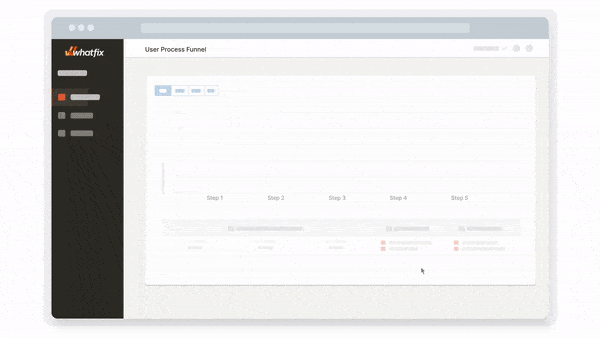
3. Experiment with shorter and longer periods for conversions
There is no shortage of factors that can influence your user behavior patterns.
For example, A new campaign can cause large spikes in specific users visiting your product and engaging with it in a certain way based on your campaign’s target criteria. Your user flow metrics during this peak period may look completely different next to metrics captured from users who trickle into your site organically over time.
Both data sets are valuable and give you a more holistic understanding of how your product usage patterns differ across channels.
This is just one example of how user behavior can fluctuate over time. Product usage patterns and conversions can gradually shift due to ongoing events, campaigns, economic disruptions, market competition, holidays, etc.
The more data you collect from your user path analysis across shorter and longer timeframes, the more equipped your product team will be to predict and mitigate conversion bottlenecks or dips in revenue.
Start analyzing and improving your user flows and paths with Whatfix
From user onboarding to conversion optimizations and customer retention, an effective user path analysis gives product and design teams the information they need to transform the customer experience. You can use a digital adoption platform (DAP) like Whatifx to build, implement, and measure user paths at scale.



